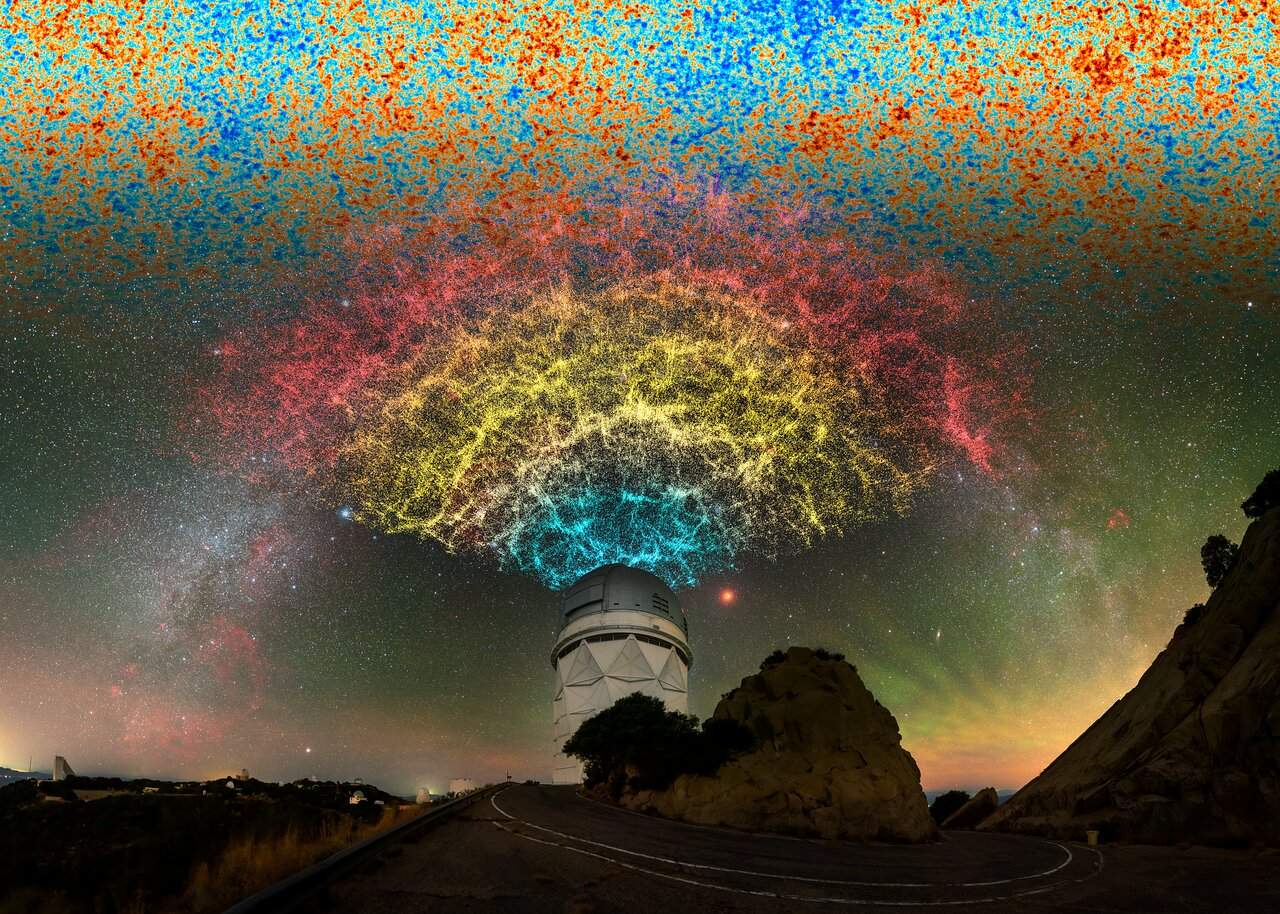Mounted on the NSF Nicholas U. Mayall 4-meter telescope at Kitt Peak National Observatory in Arizona, it is a scientific instrument involved in some of the most important research ever conducted. This is DESI, which is short for Dark energy spectroscopy instrumentand is leading a five-year investigation to create the largest 3D map of the universe ever obtained.
The result of the international scientific collaboration of more than 900 researchers from more than 70 institutions around the world, DESI is operated by the US Department of Energy's Lawrence Berkeley National Laboratory (LBNL). It has been observed since the instrument began its survey of the sky in 2021 5,000 galaxies every 20 minutes, for a total of more than 100,000 galaxies per night..
Astronomers are now conducting preliminary analysis of the data from the first year of this survey. Using the spectra of nearby galaxies and distant quasars, researchers were able to measure the expansion history of the universe using… Highest accuracy ever achieved, better than 1%.
The results confirm the basis of the standard cosmological model of the universe, and provide an unprecedented glimpse into the nature of dark energy and its effects on the large-scale structure of the universe.
Mapping the universe, galaxy by galaxy
To map the universe, DESI collects light from millions of galaxies across more than a third of the entire sky. By analyzing the light coming from each galaxy into its color spectrum, DESI can determine how much the light is redshifted, or stretched to a longer wavelength ( Redshift), from the expansion of the universe over the billions of years it traveled before arriving on Earth. In general, the higher the redshift, the farther away the galaxy is.
Using 5,000 tiny robotic “eyes,” DESI is able to make this measurement at unprecedented speed. In her first year alone, DESI surpasses all previous surveys of this type in terms of quantity and quality.
With incredible depth and precision, DESI's first year of data allowed astronomers to measure the universe's expansion rate up to 11 billion years ago, when the universe was only a quarter of its current age, using a feature of the universe's large-scale structure. Universe : Baryon acoustic oscillations (BAO) Baryonic acoustic oscillations.
Investigating cosmic history thanks to BAOs
BAOs are the remaining imprint of pressure waves that permeated the early universe when it was little more than a hot, dense soup of subatomic particles. As the universe expanded and cooled, the waves stagnated, freezing the ripples and seeding future galaxies in denser regions.
This pattern can be seen in the detailed DESI map that appears Filaments of galaxies clustered togetherSeparated by spaces where there are fewer objects.

At a certain distance, BAOs become too faint to be detected using typical galaxies. So astronomers look at what is backlit by the cores of very bright and distant galaxies, quasars. As light from quasars travels through the universe, it is absorbed by clouds of gas between galaxies, allowing astronomers to map pockets of dense matter. To implement this technique, researchers It used 450,000 quasars, the largest array ever collected for this type of study.
With DESI's unique ability to map millions of nearby galaxies and distant quasars, astronomers can measure the propagation of ripples at different periods of cosmic history, to see how dark energy changed the scale over time during expansion.
More and more details of cosmic history
While the history of the expansion of the universe may be more complex than previously imagined, confirmation of this will have to await the completion of the DESI project. By the end of the five-year investigation, DESI plans to map more than 3 million quasars and 37 million galaxies. As more data is released, astronomers will work to improve their results further.
“This project addresses some of the biggest questions in astronomy, such as the nature of the mysterious dark energy that drives the expansion of the universe,” said Chris Davis, NSF program director at NOIRLab.
While DESI continues to impress with its performance, scientists already know that its data will work in harmony with future surveys of the sky conducted by the Vera C. Rubin Observatory and the Nancy Grace Roman Space Telescope. The DESI collaboration is currently studying potential upgrades to the instrument and plans to expand its cosmic exploration to The second stage, DESI-II.
a this page, a series of publications can be found starting with the first release of DESI data.
Do you like what you are reading? You can contribute to the growth of the platform by subscribing to us. You'll have access to insights, detailed analysis, research, newsletters, discounts on our store, and much more. Access to all the exclusive benefits of the Astrospace community.
Join Astrospace.it Orbit too.
Don't miss the latest news and insights about the space sector:
Subscribe to our channel cable Follow us on Instagram

“Internet trailblazer. Travelaholic. Passionate social media evangelist. Tv advocate.”







More Stories
Franco Di Mare is with him during his illness. His “women”: his daughter Stella, whom he adopted in Kosovo, his sisters, and his partner, Julia. “I was running alone”
Listen to the haunting sound of space thunder recorded on Venus in 1982
Watch a real video of the comet's surface